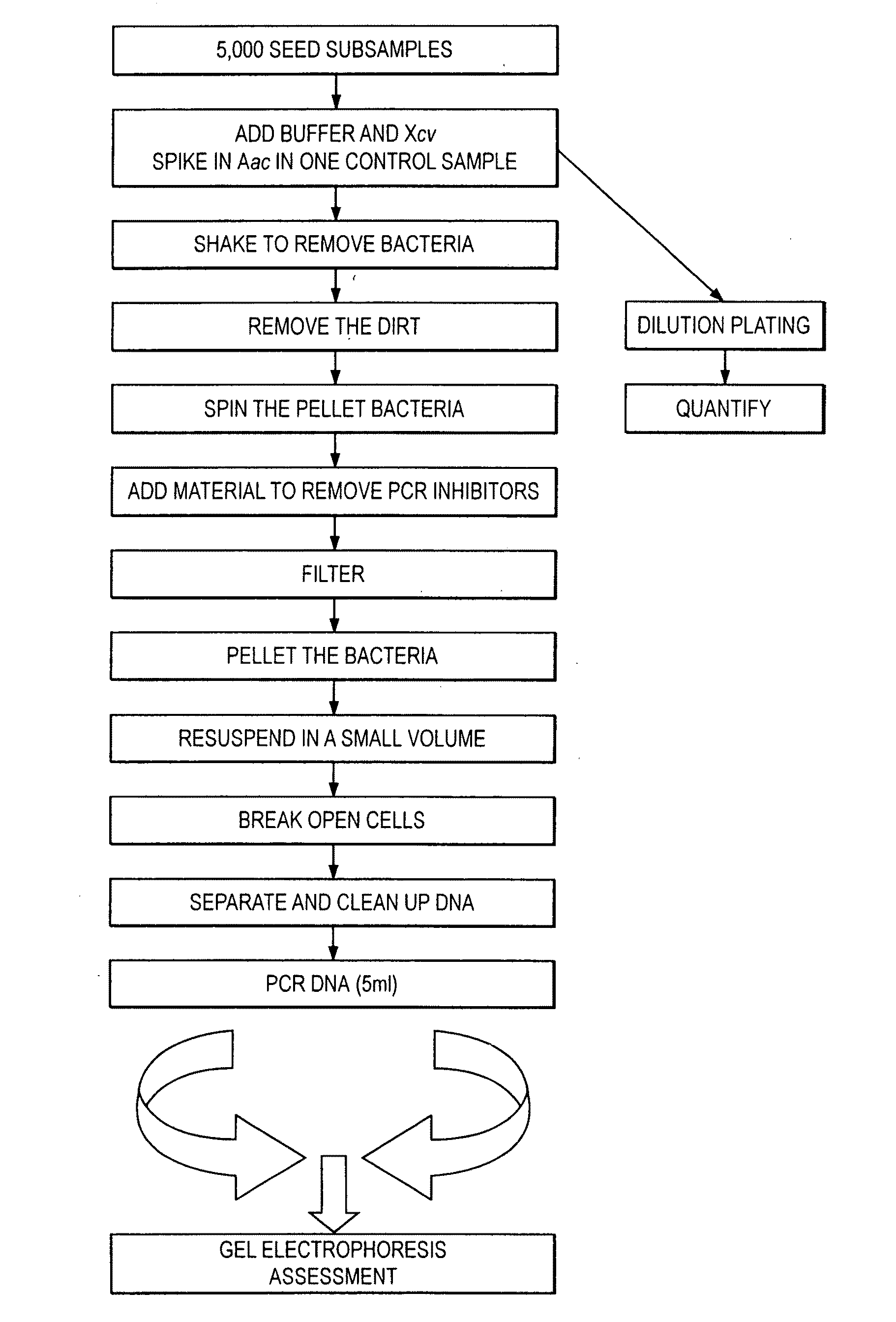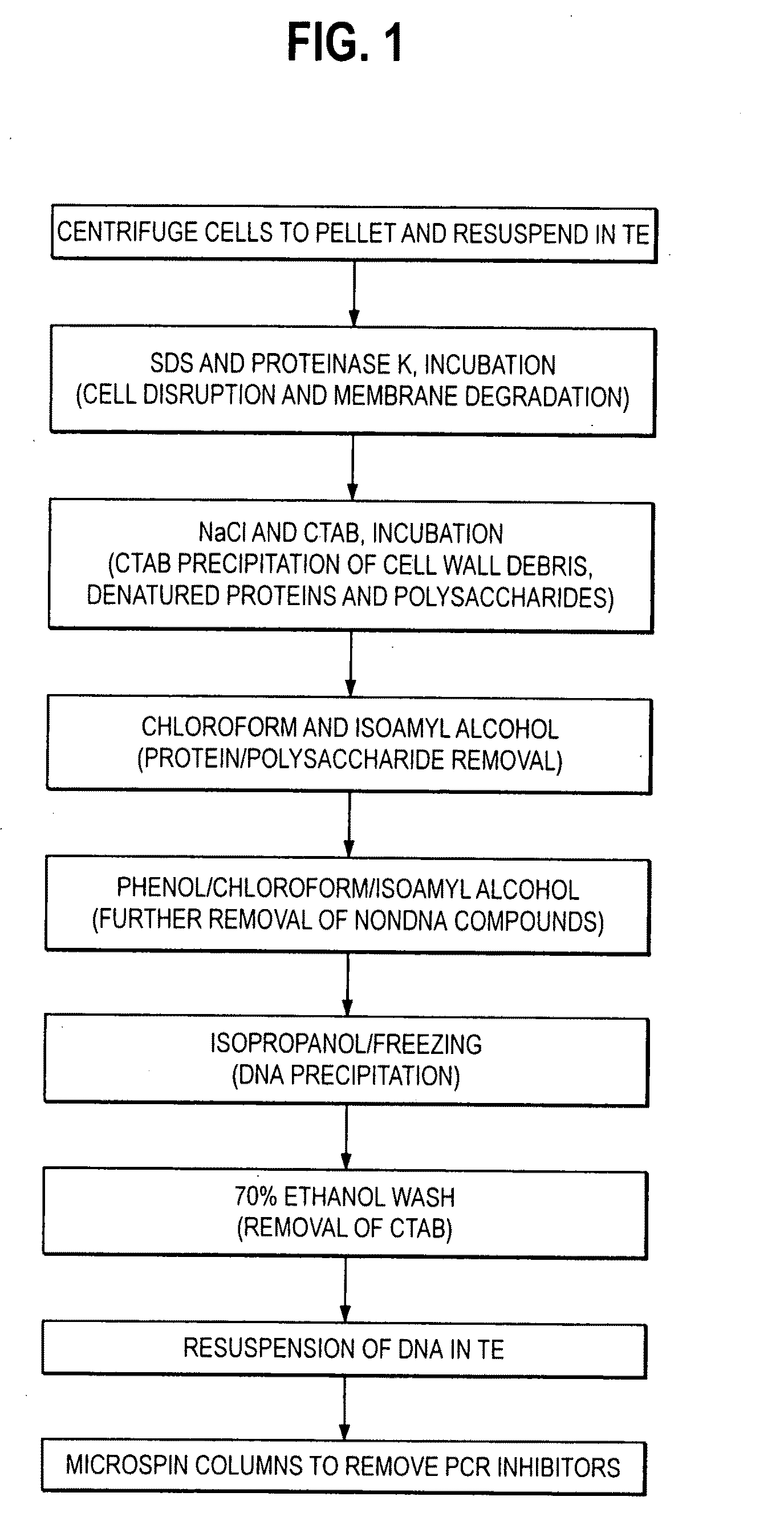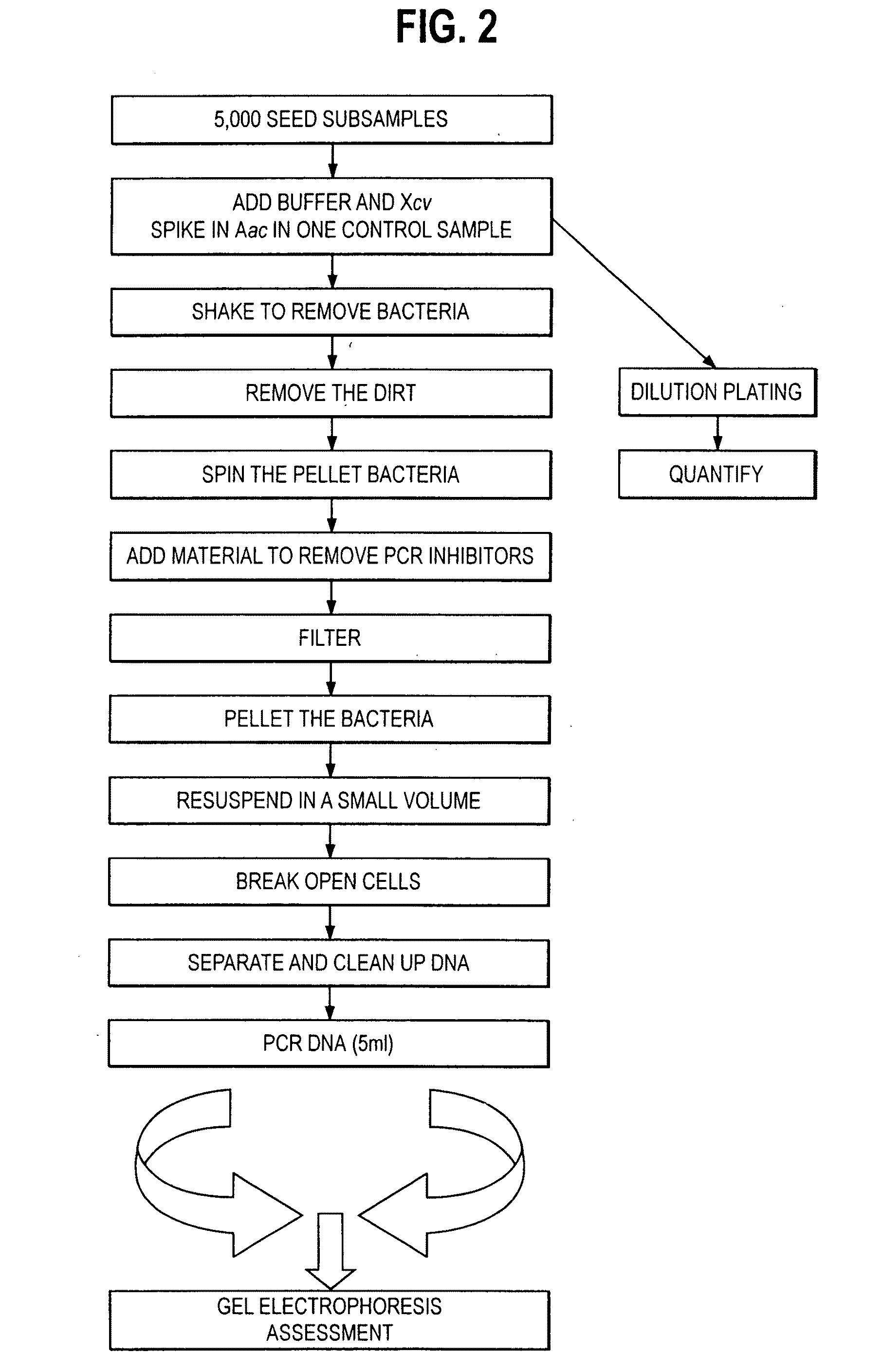Primers and primer sets for use in methods to detect the presence of acidovorax avenae subsp. citrulli
a technology of acidovorax avenae and primer sets, applied in the field of molecular biology, can solve the problems of affecting the detection method, and affecting the detection effect of acidovorax avenae subsp. citrulli, etc., and achieves the effects of reducing the number of primer sets
- Summary
- Abstract
- Description
- Claims
- Application Information
AI Technical Summary
Benefits of technology
Problems solved by technology
Method used
Image
Examples
example 1
Development of the Primers of the Present Invention
[0055]Primers (identified as RST 90 and RST 91) supplied by R. Stall (University of Florida) were used in an amplification reaction to amplify Acidovorax avenae subsp. citrulli. A 380 base pair PCR product was obtained, cloned and sequenced, and the sequence of the product was used to develop the primers of the present invention using routine techniques known in the art such as those described in Current Protocols in Molecular Biology, Ausubel, Brent, Kingston, Moore, Seidman, Smith and Struhl, editors, John Wiley & Sons (1994).
[0056]More specifically, the PCR product was resolved on an agarose gel, and excised using a razor blade. Comparison of the product with molecular mass markers provided an estimate of the size of the product around 400 base pairs. Excised DNA was purified from the agarose by crushing the agarose into small pieces and centrifuging the slurry through a small column packed with glass wool.
[0057]Purified DNA was ...
example 2a
Protocol for Preparing Seed Samples Prior to PCR
[0060]A culture of Xanthomonas campestris pv. vesicatoria (Xcv) is initiated on YDC agar (hereinafter referred to as “YDC”) and incubated at 28° C. If timing is such that a culture cannot be started two days ahead of the test (assay) date, then one can be initiated one day ahead with heavy streaking on YDC. The Xcv is included in the test as an added control to insure that the test is performing correctly. The test can be conducted without the inclusion of the Xcv. Initiate 3-4 tubes of Nutrient Broth with a viable culture of Acidovorax avenae subsp. citrulli (Aac) the day before the test is to be run. Place the tubes on a shaker at 37° C. at 200 rpm. Count out two (2) samples of 5,000 seeds of the seeds to been used as the negative and positive control and place in Ziplock bags. Label the bags with the appropriate sample numbers and record.
[0061]Count out the appropriate number of samples (of seed) to be tested. The number to be teste...
example 2b
DNA Extraction
[0071]The final suspension from Example 2a is centrifuged using an Eppendorf 5415C centrifuge and rotor at about 16,000 g for about 2 minutes. The supernatant is discarded and the pellet resuspended in about 582 p. 1 of TE buffer (See Example 1d for protocol for TE buffer). Add about 15 p. 1 of 20% sodium dodecyl sulfate (SDS) and about 3 p. 1 of Proteinase K (See Example 2d) and the suspension is incubated at 37° C. for about 1 to about 1.5 hours. Add about 100 μl of 5M NaCl and 80 μl of hexadecyltrimethylammonium bromide (CTAB) (See Example 2d). The suspension is incubated in a water bath at 65° C. for about 15 minutes. Add about 770 μl of chloroform-isoamyl alcohol (24:1) (See Example 2d). The suspension is mixed for about 15 minutes then centrifuged for about 5 minutes at about 16,000 g using an Eppendorf 5417C centrifuge and rotor. The aqueous supernatant is discarded and placed into a 2 ml tube. About 500 μl of phenol / chloroform / isoamyl alcohol (25:24:1) is added...
PUM
| Property | Measurement | Unit |
|---|---|---|
| temperatures | aaaaa | aaaaa |
| temperatures | aaaaa | aaaaa |
| Tm | aaaaa | aaaaa |
Abstract
Description
Claims
Application Information
 Login to View More
Login to View More - R&D
- Intellectual Property
- Life Sciences
- Materials
- Tech Scout
- Unparalleled Data Quality
- Higher Quality Content
- 60% Fewer Hallucinations
Browse by: Latest US Patents, China's latest patents, Technical Efficacy Thesaurus, Application Domain, Technology Topic, Popular Technical Reports.
© 2025 PatSnap. All rights reserved.Legal|Privacy policy|Modern Slavery Act Transparency Statement|Sitemap|About US| Contact US: help@patsnap.com



